Basically, all of the links on this page are affiliate links. I receive a commission (at no extra cost to you) if you make a purchase after clicking one of the affiliate links below. Read our Affiliate Link Policy for more information.
If this will be your first time ordering from Banggood, you should know a few things.
NEWBEEDDRONE & FLYWOO TOOLKITS
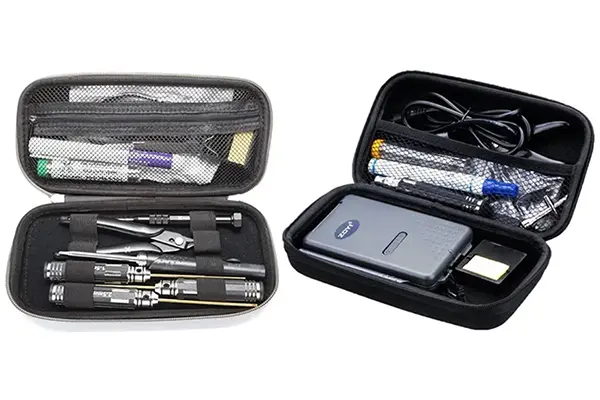
Find this product at these vendors:
Before you scroll down to the rest of the page, I want to introduce you to the Newbeedrone Tool Kit and the Flywoo Tool Kit. They’ve got almost every tool or supply you would need to build a whole quadcopter, all in one kit, at a very reasonable price. Other toolkits always seem to leave out one essential tool or include something unnecessary. These are as close to perfect as I’ve ever seen.
The NewBeeDrone toolkit has slightly better quality of tools–especially the prop wrench. The Flywoo toolkit has a wider variety of tools, including my personal favorite portable multimeter. Flywoo is also a little more expensive.
You can’t build a quad without a soldering iron. Well… you can, but it’ll be a mess. The most important characteristic of your iron is that it be temperature controlled. A temperature-controlled iron quickly achieves a precise, adjustable temperature. It can work equally well on tiny solder pads and giant XT60 connectors. It won’t damage itself by overheating if you set it down for a while.
SEQURE SQ-D60B
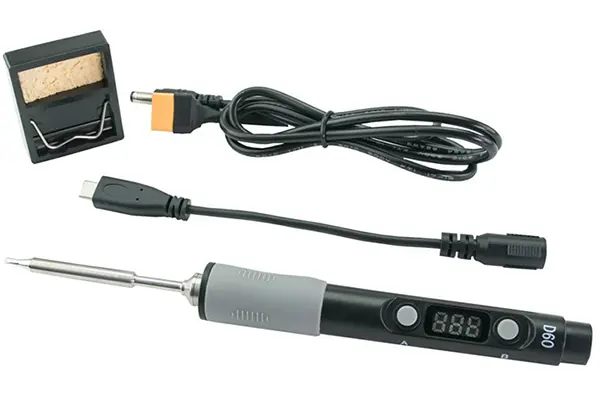
CHEAPEST WORTH HAVING #1
The Sequre SQ-D608B is probably the best price-for-value soldering iron in the world today. It’s based on the design of the amazing TS100, but the price has been brought down by removing the fancy LCD screen and other convenience features. But the core soldering performance is the same as the TS100 is famous for! And it can use the same high-quality tips as the TS100!
If you’re just getting started and want a soldering iron on a budget, this is the one! You can use it on the bench to build your quad, then take it into the field to repair the quad after you crash it. The main reason you might choose something more expensive relates to ease-of-use and ergonomics. A benchtop-specific iron will have a larger, more comfortable handle (and it’ll plug into the wall instead of a battery).
Find this product at these vendors:
AOYUE 469
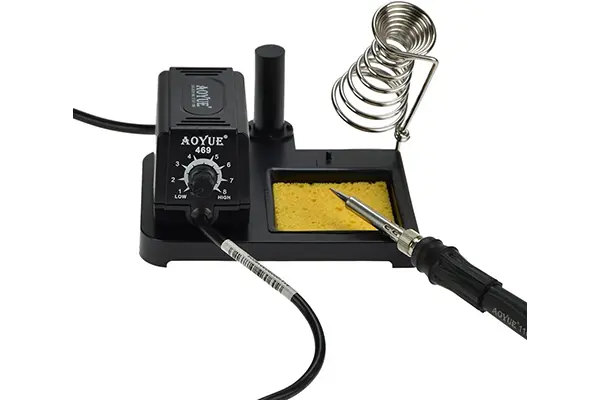
CHEAPEST WORTH HAVING #2
I first learned of Aoyue soldering stations in my interview with Randy Rubinstein from SRA Solder. In addition to being reliable and functional irons, Aoyue stand out for having a wide range of accessories and replacement parts available. This isn’t a replace-it-when-it-breaks iron. In fact, if you’re in the U.S. you can order replacement parts direct from SRA.
Compared to the Yihua, I like the base on the Aoyue better for bench use. The Yihua might be better if you moved around more often. Frankly, I also think the Aoyue is better quality and more reliable. But some international buyers may find the Yihua easier to purchase.
Find this product at these vendors:
TS100
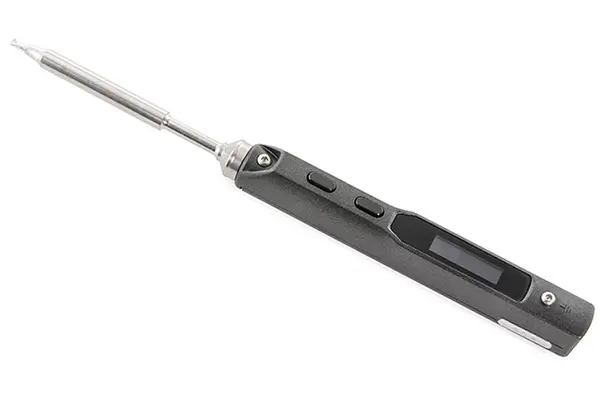
PORTABLE ROCK STAR
If this iron were just a little easier to hold, it’d be my choice for the best iron overall. But if it were easier to hold, it’d be bigger, and then it wouldn’t be so awesomely portable. There simply isn’t anything better for field repairs.
If you want to run this off a LiPo, you’ll need a 2.5mm to XT60 cable. You can make your own, or buy one at GetFPV.
Find this product at these vendors:
HAKKO FX-888D
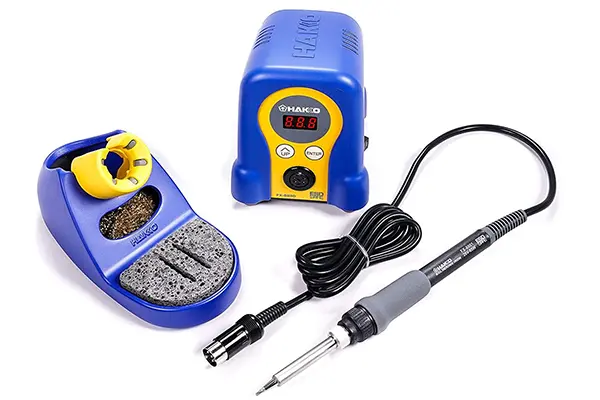
TOP OF THE LINE
This is widely considered to be the best soldering iron a hobbyist can choose. The 888D has digital push-button temperature control with five presets to quickly choose whichever temperature is right for the job. Comes with a sturdy base and sponge holder.
Find this product at these vendors:
FUME EXTRACTOR
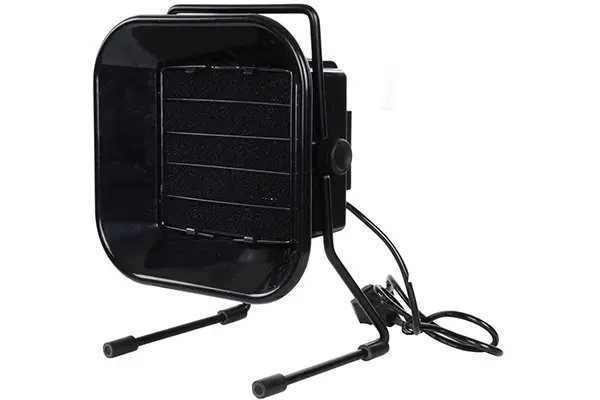
Will you get lead poisoning from breathing solder fumes? Actually, no. Soldering isn’t hot enough to vaporize lead. So what’s that smoke? It’s the flux in your solder burning off, and trust me: you don’t want to breath it.
A fume extractor pulls the fumes of soldering away from you, into a charcoal filter, where it’s safely absorbed. You can buy one of these… or you can do like I did for years: just hold your breath every time you touch the iron to a joint.
Find this product at these vendors:
SOLDERING PRACTICE BOARDS
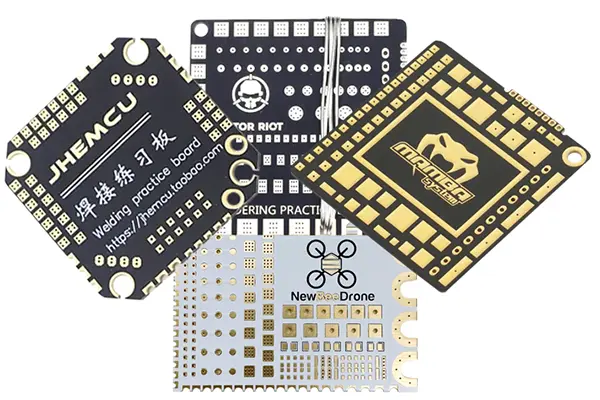
If you’re just learning how to solder, the right place to learn is on a cheap solder practice board, not an expensive piece of electronics. These practice boards have the same type of pads that you’ll find on flight controllers and ESCs, so they’re perfect for the FPV hobbyist.
Find this product at these vendors:
If you need a “how to solder” tutorial, here it is:
Most FPV pilots need to watch this soldering tutorial
A carpenter has a hammer; a butcher has a knife, and an electronics hobbyist must own a multimeter. Without one, you can’t know what the electricity is doing on your quad. For example, here’s a video I made showing how to verify polarity and voltage with a multimeter.
INNOVA 3320
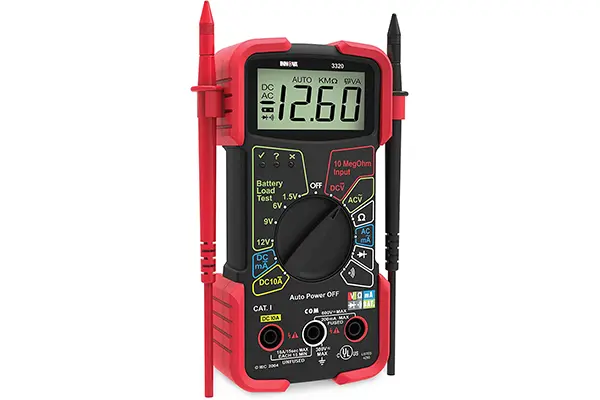
CHEAP AND EFFECTIVE
This has been my favorite multimeter for as long as I’ve been in this hobby. Once, I bought a “better” one and I hated it. This meter has all of the things I actually use, right on the main dial. It’s compact enough to easily stuff in a flight bag. More expensive meters have additional precision, reliability, and features, but I’d rather just spend $20 on this one.
Find this product at these vendors:
VICTOR / ZOYI VC921
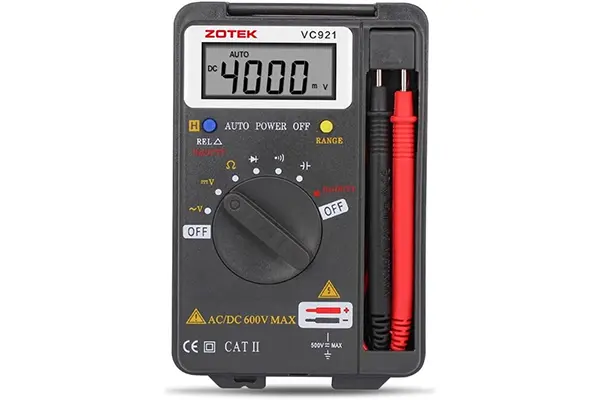
BEST PORTABLE MULTIMETER
I found the VC921 when I was looking for a thin and small multimeter to carry in my portable tool kit. I wanted it to be self-contained so the leads weren’t dangling all over my backpack. And I wanted it to have all the major functions needed for FPV, including capacitance measurement (good for knowing if your filter caps have died or not). The VC921 ticks all those boxes!
With a product this cheap, it’s natural to wonder whether it’s reliable. So I used it for several months before adding it to the list. And online reviews generally seem to be positive (although not 100% positive).
The main feature this meter is missing is current measurement. It doesn’t have it at all. But to tell the truth, when I want to measure current, I tend to reach for a clamp meter. So I’m willing to give that up in order to get a capable, compact, and small meter like the VC921.
Find this product at these vendors:
FLUKE 115
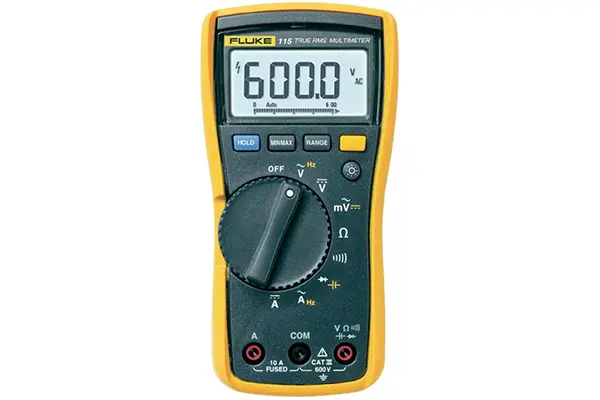
TOP OF THE LINE
Fluke makes top-quality commercial test equipment for electronics professionals. For an electronics hobbyist, this is probably the last meter you’ll ever need to buy. It has features that the Innova doesn’t, such as capacitance and frequency measurement. But the real reason you’ll pay $150 for this meter is Fluke’s well-earned reputation for accuracy and bulletproof reliability.
Find this product at these vendors:
ANENG AN8008
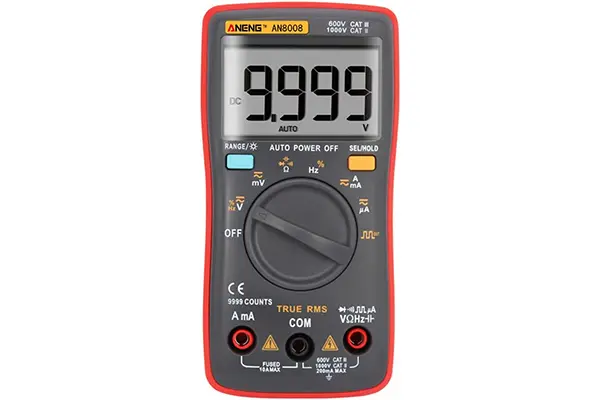
HIGH-PRECISION METER
Cheap multimeters can be just as accurate and precise as expensive ones! In fact, the 9999 count precision of the AN8008 trounces the 600 count precision of the Fluke 115 above. But it turns out, it’s just not that hard to precisely measure voltage and current. If you don’t believe me, check out EEVBlog’s review of this meter.
So what do you give up with a cheaper meter like the AN8008? Durability? Sure. And safety. Think twice before using this meter to probe a 240 volt mains circuit! But for a hobbyist working on low voltage signals and not bashing the meter around in the back of a truck all day, a meter like the AN8008 will more than get the job done.
This meter’s 9999-counts make it perfect for measurements where high precision is required, such as calibrating a LiPo battery charger.
Find this product at these vendors:
UNI-T UT210E
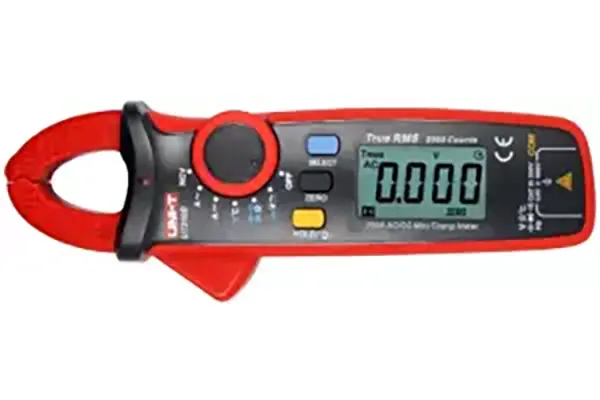
DC-CAPABLE CLAMP METER
The beautiful thing about a clamp-meter is that it can measure current simply by clamping its jaws around the wire. You won’t understand how liberating this is until you’ve tried measuring current with a regular meter for a while. It used to be the case that only expensive clamp meters could measure DC current–you know, the kind that we’re using? But this one is cheap and capable.
You might be tempted to buy only this meter, but I don’t recommend doing that. Accessing common functions requires annoying button presses. If the day finally comes that it’s worth $35 to you to easily measure current, this is the meter you’ll buy. Until then, stick with one of the others.
Find this product at these vendors:
N1201SA SWR METER
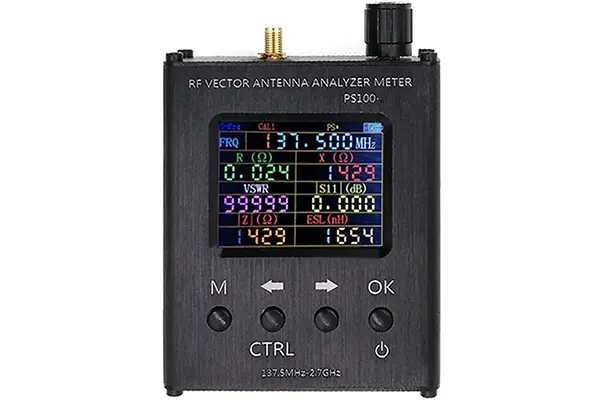
2.7 GHZ ANTENNA ANALYZER
Here’s a dirty secret of the RC industry: a lot of the time, nobody is actually quality-checking the antennas they sell you. The antennas are usually designed correctly. Then they go to manufacturing and … everybody just hopes they’re manufactured correctly. If they perform badly, they hope you won’t notice.
In order to test an antenna’s performance, you need a tool like the N1201SA SWR meter. The asking price of almost $200 is much less than the thousands of dollars these devices usually cost. So what’s the catch? One limitation of the N1201SA is that it only measures up to 2.7 GHz. So it’ll be great for testing 2.4 GHz receiver antennas, 900 MHz Crossfire or R9 antennas, or anything of lower frequencies. The one place it won’t work is with 5.8 GHz FPV antennas–unfortunately, where it might be the most useful.
If you’ve ever heard stories about FrSky receiver antennas being the wrong length, resulting in reduced range and failsafes, this is the tool you’d use to detect and fix that problem.
Find this product at these vendors:
OWLRC SWR METER
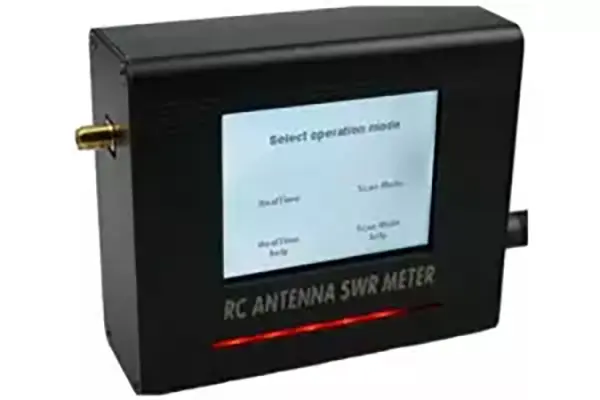
5 GHZ ANTENNA ANALYZER
If you build your own antennas, then you already know why you need an SWR meter. Why would the average person want this tool? An SWR meter tells you the frequency at which an antenna is most sensitive. It can also be used to tell if an antenna is defective or damaged.
An SWR analyzer would normally cost thousands of dollars. The OwlRC SWR Meter uses a more basic method to measure SWR. It’s more affordable, but not as accurate. But it’s still accurate enough to be of use to some people working with 5 GHz antennas, and that’s why it’s on this list.
Find this product at these vendors:
IMMERSIONRC POWER METER V2
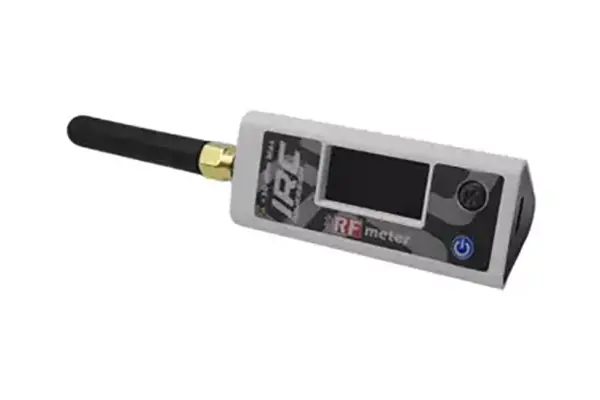
TEST VTX OUTPUT POWER
RF power meters normally cost thousands of dollars. But you don’t need lab-grade accuracy… You just want to know if your video transmitter is working! Enter the ImmersionRC RF Power Meter. ImmersionRC hand-calibrates each RF Power Meter against a $30,000 lab-grade device. Then they ship them to you!
The ImmersionRC RF Power Meter is the perfect tool for comparing two vTX to see which is stronger; for testing whether your vTX transmits more power on one channel than another; for testing whether your vTX reduces output power when it gets hot; or just for testing whether your vTX is transmitting at all! If you are a race organizer, the Power Meter helps you quickly find quads that are transmitting at more than the authorized output power.
This is an incredibly useful tool, but it has to be used responsibly. DON’T MAKE THE MISTAKE THAT I DID. The Power Meter is not accurate enough to reliably say whether a vTX is or isn’t making its rated output power. It’s mostly useful for comparing two devices. If the Power Meter says your 800 mW vTX is only outputting 600 mW, please don’t call up the manufacturer and demand your money back.
Find this product at these vendors:
HAKK0 CHP-170
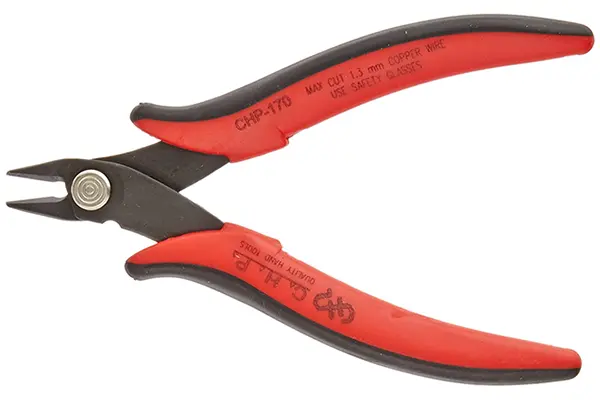
Diagonal cutters for small electronics are designed to cut the wire flush with the board, leaving no protruding ends to short out. The good news with this product is that you don’t have to spend a lot to get a top-notch brand name like Hakko.
Find this product at these vendors:
WIRE STRIPPER
CAPRI TOOLS 20011
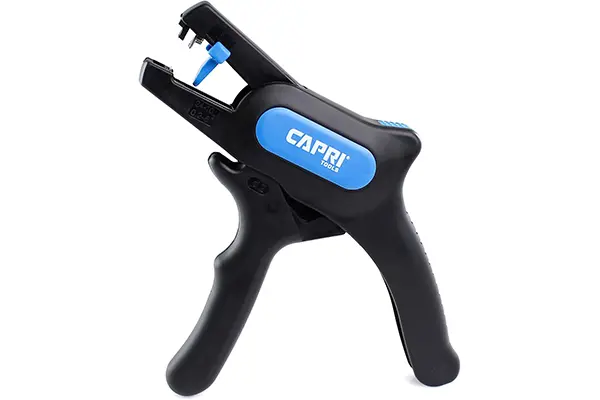
This tool isn’t absolutely essential, because you can strip wire with a diagonal cutter, an X-acto knife, or even just your fingernails. But you’ll have a much easier time and get more consistent results using an automatic wire stripper. If you’ve got a few dollars more to spend, toss it on top of your shopping cart and never look back.
Find this product at these vendors:
Soldering, by its nature, requires at least four hands: one for the iron, one for the solder, and one for each of the two (or more) parts that you are soldering. The “Helping Hands” tool holds the parts you’re soldering while you manipulate the iron and solder. If you have prehensile toes, you can skip this section.
PRO’S KIT 900-015
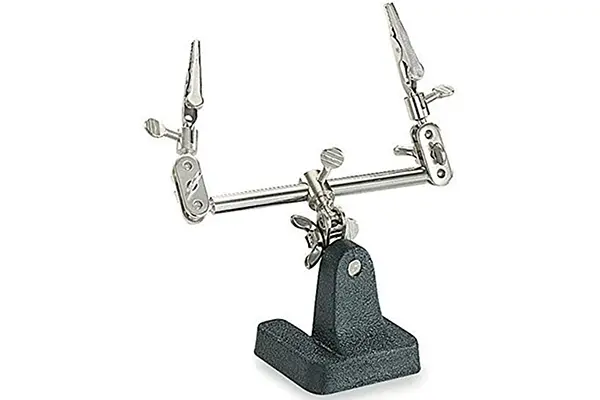
CHEAPEST POSSIBLE
The simplest and most classic version of this tool is a little annoying to use. You have to manually position and screw down the arms before every move. But the price is right.
Find this product at these vendors:
MOUNTING PUTTY
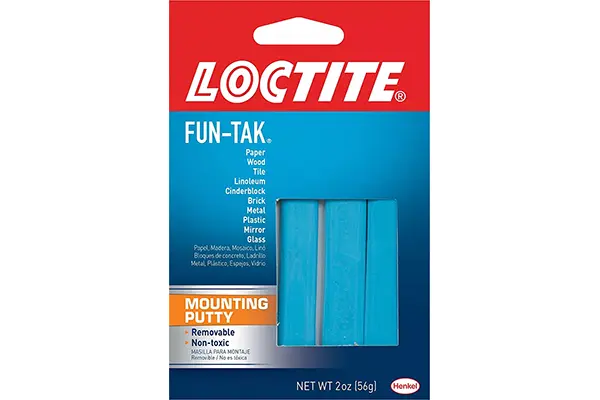
EVEN CHEAPER, MAYBE BETTER
Put a lump of this on your work surface, then stick the wire to it. Do the same for the other wire. Solder. Mounting Putty is the Hobby solderer’s secret. It’s quick, versatile, and cheap. If you’re a little creative, there’s almost no joint you couldn’t solder with this stuff.
Find this product at these vendors:
OMNIFIXO OF-M4.2
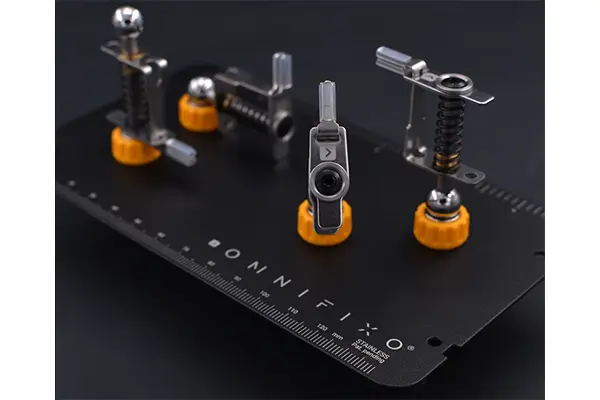
TOP OF THE LINE
This is the best 3rd hand tool I’ve ever used. Magnetic bases let you position the “hands” exactly where you want them. The arms are designed with enough friction that they stay in place while you work, but they’re infinitely adjustable to hold the pieces exactly how you want them. You can even use the clips to power components if you want! I’ve been using this system for months and simply love it.
There are only two downsides of this system. First, it’s often out of stock. Second, it’s pretty expensive compared to other 3rd hand tools. Other than that, it’s a total must-have.
Find this product at these vendors:
MAGNETIC SCREW TRAY
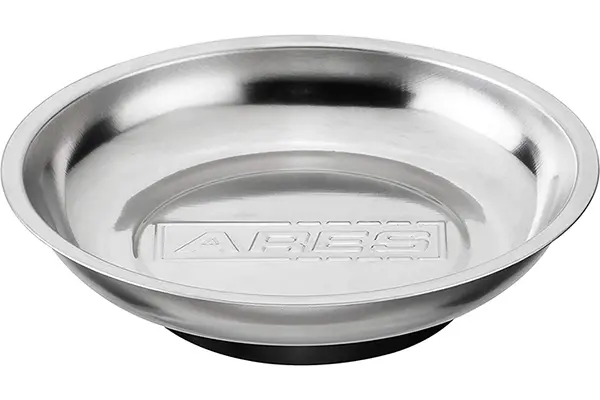
This magnetic tray holds screws so you don’t lose them. The tray’s magnetic base means you can stick it anywhere. Stingersswarm puts one on the door of his hatch-back so he can stick stuff there when he’s doing field repairs.
Find this product at these vendors:
These may be the most fundamental tools that you’ll use. It may be tempting to save some money by getting a modular tool with interchangeable bits. Don’t. Having to swap bits back and forth in the middle of a build is super, super annoying. I’ll show you proper tool sets with a dedicated tool for each bit, at a price you can afford.
NEEWER TITANIUM
HEX DRIVERS
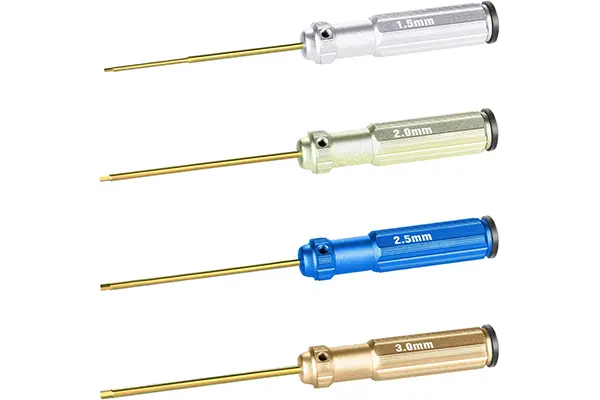
If you’re new to the world of multirotors, you might think your left-over Ikea hex-key will do. It won’t. The metric screws used on quads typically have hex-heads, and a proper driver is a gift to your wrists. These are amazingly good for their price. The only catch is that you’ll want to use a bit of blue Loc-tite on the grub screw that holds the bit into the handle, or it’ll come loose.
Find this product at these vendors:
PRO’S KIT 1PK-9402
NUT DRIVER SET
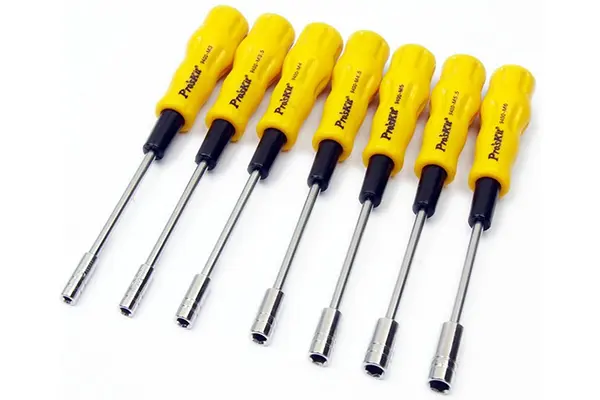
To be completely honest, you’re only going to use two of these on your multirotor: the 8mm and the 5.5mm. The 8mm is for prop nuts, where you’ll probably want something with a little more leverage. The 5.5mm is for M3 nuts such as used on flight control stacks.
You know, come to think of it, I’m not sure this set is worth it. Sure, I’m glad to have a 5.5mm driver when I’m installing M3 nylock nuts. And I just realized the Rotor Riot Kwad Toolset has three hex drivers and a 5.5mm nut driver for the same price as this set. So yeah. Go buy that instead.
Find this product at these vendors:
STARTECH 7PC
SCREW DRIVER SET
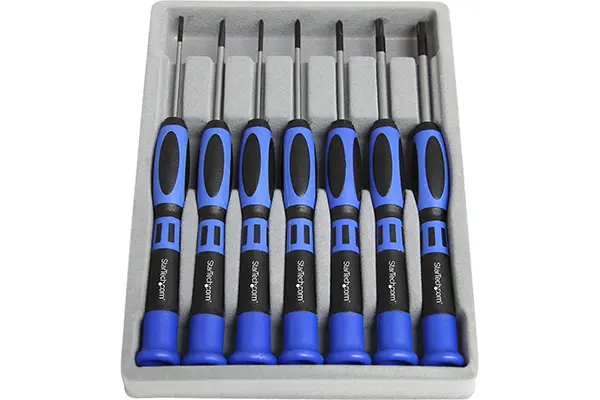
There are several sets in this listing: you want the 7 piece set. You can discard the two Torx drivers, as they’re not commonly used on quads. The remaining Phillips and flat-head screwdrivers are just what you want.
Find this product at these vendors:
MIP HEX DRIVER BALL WRENCH SET
M2, M2.5, & M3
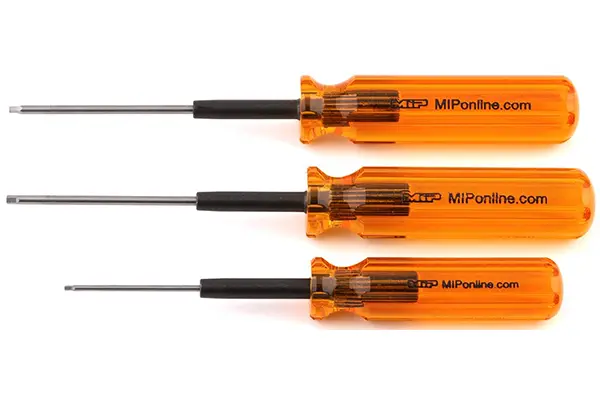
WHEN MONEY IS NO OBJECT
Find this product at these vendors:
GEARWRENCH 9108
RATCHETING BOX WRENCH
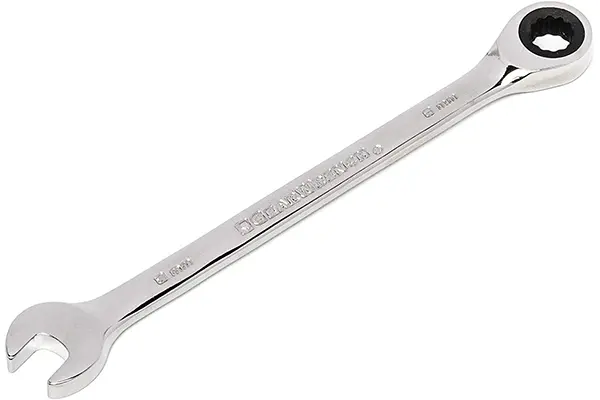
In my opinion, this little beauty is the single best way to install and remove the props on your quad. The box-end of the wrench ratchets, so you get the fast on/off action without having to keep up with a socket head. And it takes less space in your tool bag than a socket.
It can be hard at first to tell which direction the ratchet will move. Here’s a tip: the open-ended head is “looking” the direction that the wrench will turn the nut.
Find this product at these vendors:
CHEAPEST WORTH HAVING
ROTOR RIOT KWAD TOOLS
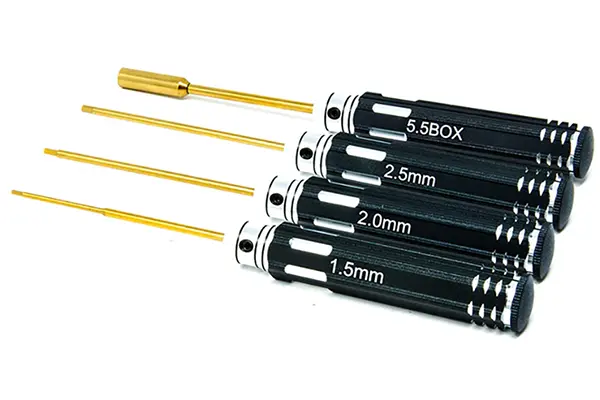
This tool set gets you the most common hex driver sizes and a 5.5mm box wrench for a bit less than buying the above sets separately. This is especially economical because the nut driver set above has you paying for five drivers and only really wanting two. The main thing this set is missing is an 8mm nut driver for prop nuts, but I prefer a ratcheting box wrench for that anyway.
Find this product at these vendors:
SPEDIX QUAD WRENCH
WITH ONE-WAY BEARINGS
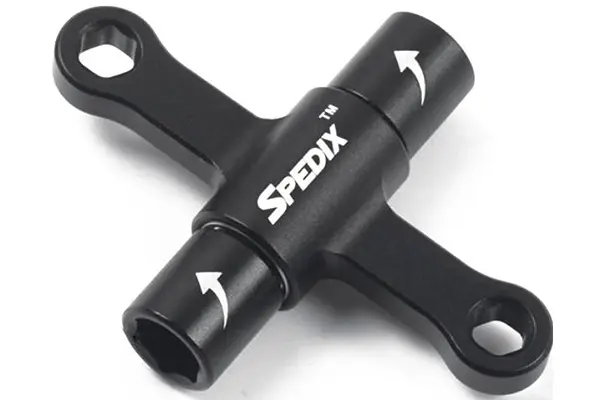
The Spedix Quad Wrench might just dethrone the ratcheting box wrench (above) as my favorite way to install and remove props. The problem with nut drivers is that you lack torque, and they don’t ratchet so it takes longer to use. The Spedix Quad Wrench solves these problems. It’s got an internal one-way bearing that lets you ratchet the nut on or off. One end of the wrench turns the nut on; one end turns the nut off. The handle gives more torque than a typical nut driver, while taking up less size in your tool bag. The big advantage of the Spedix Quad Wrench compared to the ratcheting box wrench is if you have props with a tall blade that makes it hard to get a flat wrench onto the nut. The Quad Wrench fits onto any prop and keeps your fingers away from the sharp edge of the blade.
Find this product at these vendors:
BRIGGS PRECISION
KELLEY FORCEPS
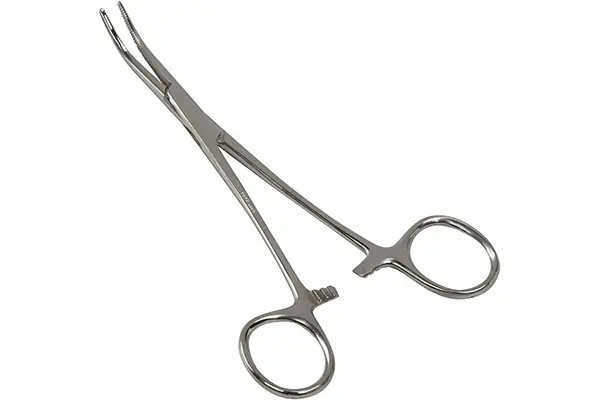
When I learned how amazing forceps are, I was kind of mad at medical professionals for not telling me sooner. This may be the single most versatile tool you’ll ever own. The long, curved nose lets you get into the type of tight areas that are common on mini-quads. The scissors-style handle gives more strength and precision than a tweezers. And it locks shut so you can set it down and do something else with your hand if you need to. As soon as you own a forceps, you’ll want several more to keep around your house. IF THERE IS ONE TOOL ON THIS PAGE THAT YOU BUY, buy this one.
Find this product at these vendors:
SMOKE STOPPER
VIFLY
SHORTSAVER 2
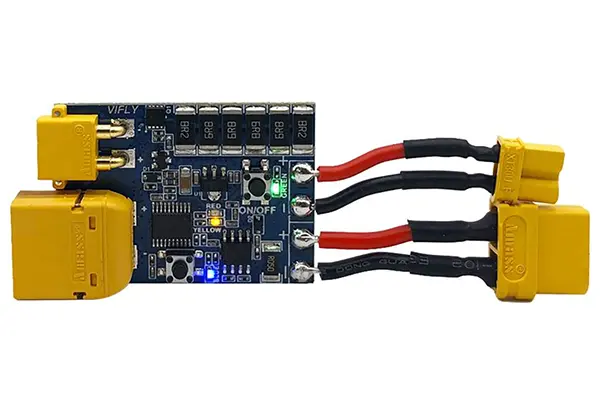
It only takes a second for a soldering mistake to turn into a fried flight controller or ESC. A smoke-stopper protects your electronics from some of these situations. When dangerous amounts of current begin to flow, the smoke stopper trips in milliseconds, breaking the circuit like a fuse.
The Vifly ShortSaver is my favorite because it contains an electronic fuse which is specifically designed for this application. It trips in milliseconds and can reset many times without losing performance or failing. It’s also got a convenient on/off switch to allow you to power cycle your quadcopter without unplugging the battery–great for binding FrSky receivers.
Find this product at these vendors:
CROSS-LOCK TWEEZERS SET
STRAIGHT, 45°, 90°
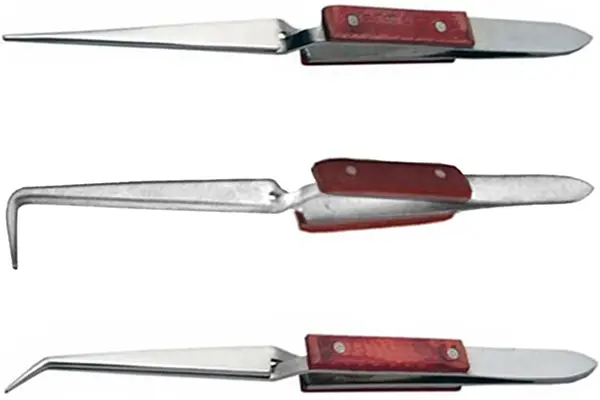
Find this product at these vendors:
Cross-lock tweezers beat regular tweezers because they apply pressure when you release them, so they’ll keep holding on to your work even if you set them down. A forceps will lock tight and potentially damage something delicate. A cross-lock tweezers is the right tool for more delicate work.
SCALE
3 kg CAPACITY / .1g PRECISION
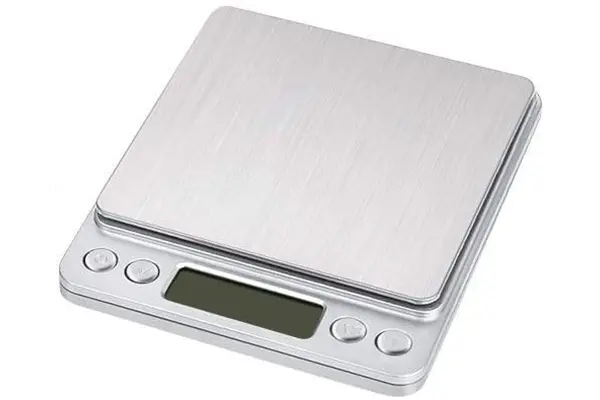
I think this scale is perfect for a quadcopter builder’s bench. The 0.1-gram precision is enough to weigh even very light objects like propellers or individual screws. The 3 kg capacity is enough for just about any quadcopter that’d fit on the bed. Speaking of which, there’s a reasonably large bed so that you can weigh objects without covering up the screen.
Find this product at these vendors:
SMALL, CHEAP, PORTABLE
300W HOT AIR GUN
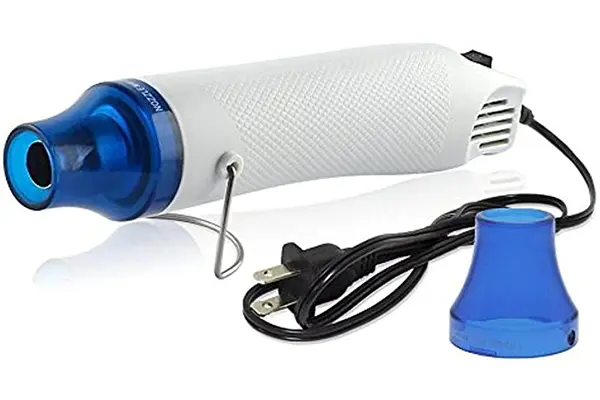
For the majority of builders who simply need somethng to make heat shrink, shrink, this tool is totally sufficient. Larger heat guns will cost more and take up more space on your bench, to little benefit. Here’s a link to the 220v version for people in countries that use it.
Find this product at these vendors:
LARGE, POWERFUL, VERSATILE
WAGNER HT 1000
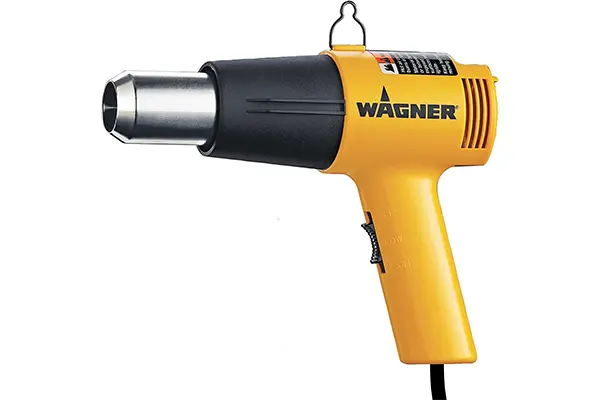
There are two reasons you’d buy this gun. One, if you want to do more than just shrink insulation on your quad, a bigger heat gun will have more applications. Want to remove paint from your walls? This is the gun for you.
Reason number two is that you think bigger, hotter, more powerful is better, and you like the idea of melting random plastic items around your house with 1200 Watts of POWAH!
Find this product at these vendors:
The main use of a hot glue gun in RC is for building foam-board airplanes. Ever since I got into multirotors, I don’t find that I use my hot glue gun very much. Hot glue is heavy, and it doesn’t stick to carbon or metal very well. But this product is considered to be a staple of the RC world by so many people that I’m including it anyway. Let’s face it… once you can stick things together with hot glue, you never look at the world the same way again.
There are two types of glue stick on the market: low-temp and high-temp. Low-temp is for scrapbooking. For hobby use, you want high-temp, and all of the guns on this page are capable of melting a high-temp stick.
ADTECH PRO200
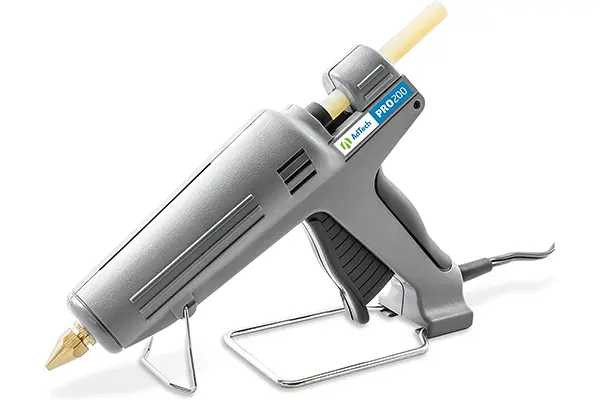
TOP OF THE LINE
This gun was made famous by the most prolific foam-board builders in the world: Flite Test. It’s a monster. 200 watts of power heat it up in no time. A wide, stable base somehow manages to also stay out of the way when you’re using it. You’ll feel like such a badass when you’re holding this gun that you’ll want to make a holster and wear it all day. AND YOU’LL MAKE THE HOLSTER WITH THE GUN!
Find this product at these vendors:
NEEDLE FILE SET
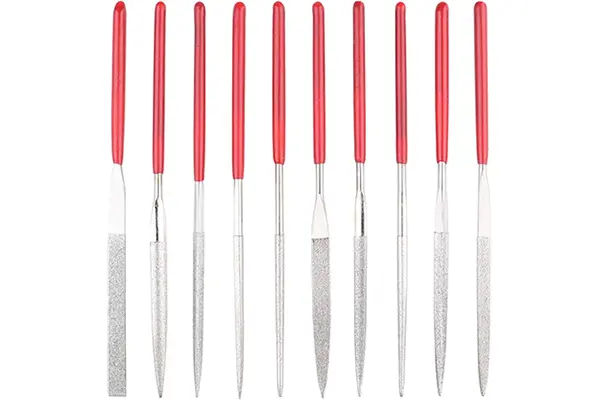
You’ll use these files to modify and clean up carbon fiber frame parts, as well as do minor metal-working, such as cleaning up the cut end of a screw that you shortened. The files are small, but so are the parts you’ll be working on.
Find this product at these vendors:
DREMEL 8220
CORDLESS ROTARY TOOL
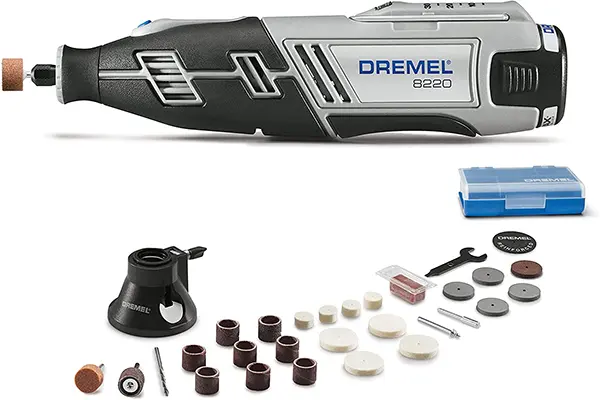
If you’re a hobbyist, you probably already own a Dremel rotary tool. In FPV, the most common use is cutting off screws, cutting slots in stripped screws, and drilling and grinding carbon fiber plates. All of which is to say, it’s not absolutely essential, but if you get one, it’ll make your life easier, and there will be a million other uses for it around the house.
The 8220 has a built-in rechargeable battery, so there’s no cord to get in your way. The speed is adjustable from 5000 rpm to 30,000 rpm, which means you can do slow-rpm drilling and high-rpm cutting with the same tool. The on-off switch is separate from the rpm slider, so you won’t reset the speed when you take a break. It’s compatible with all Dremel accessories.
Find this product at these vendors:
DIGITAL CALIPER
IGAGING ABSOLUTE ORIGIN
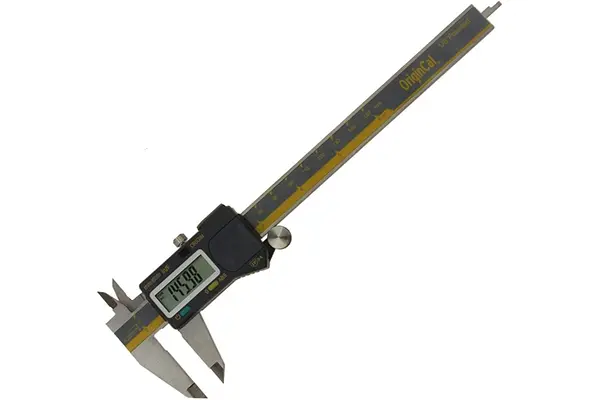
You can easily pay hundreds of dollars for a Japanese-made digital caliper. That’s overkill for most hobbyists though. I’ve owned the iGaging Absolute Origin digital caliper for over a year now and can recommend it heartily. I prefer the six-inch version with fractions-of-an-inch, which comes in around $50. Those in metric countries can skip the fractions mode and save $10. Ten dollars just for fractions? Really! That’s the price I pay for living somewhere that uses Imperial units I guess.
Absolute origin means that it remembers the zero-position in between uses. You don’t have to re-zero it each time like older calipers. Resolution of 0.01mm and accuracy of 0.02mm are more than most hobbyists will ever need. It’s even got USB output for rapid entry of measurements into a spreadsheet.
Find this product at these vendors:



